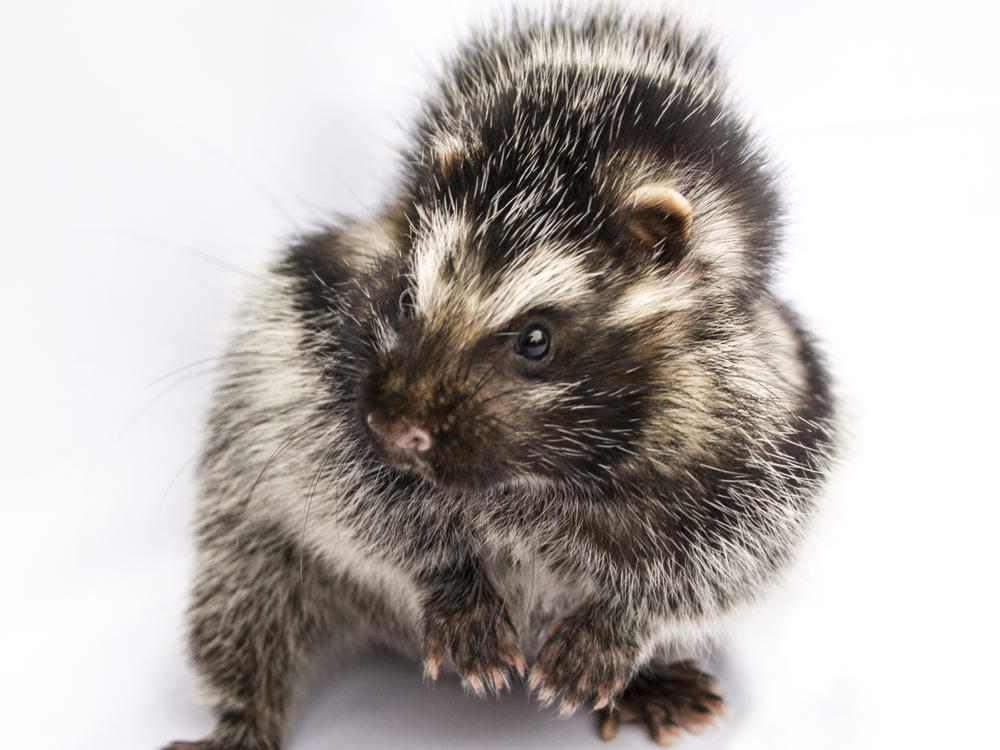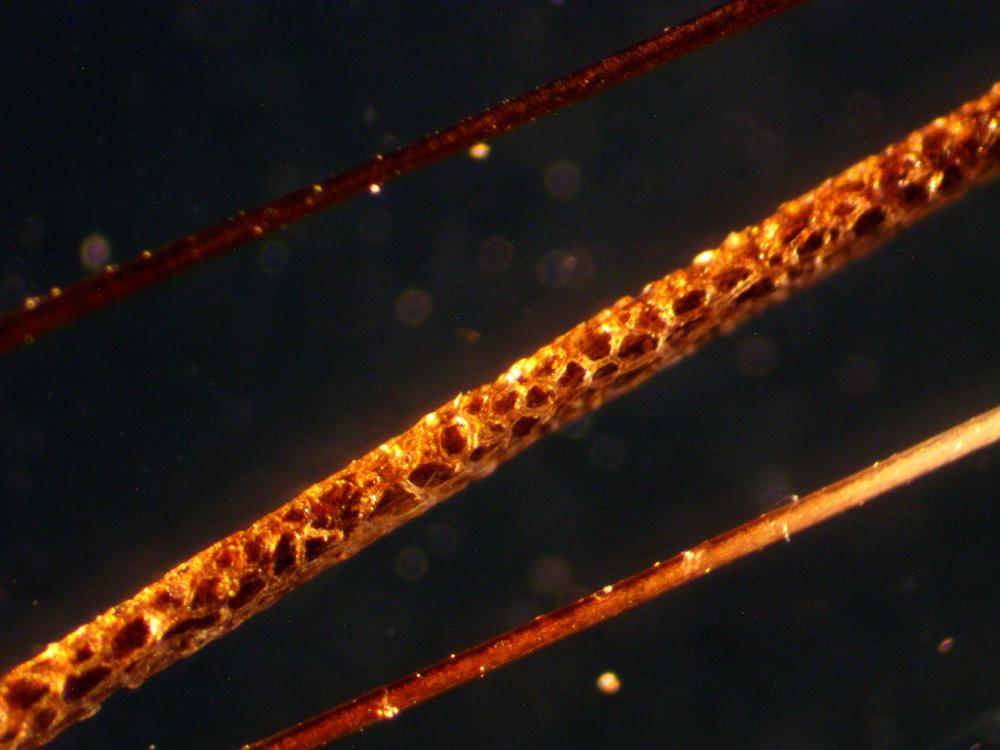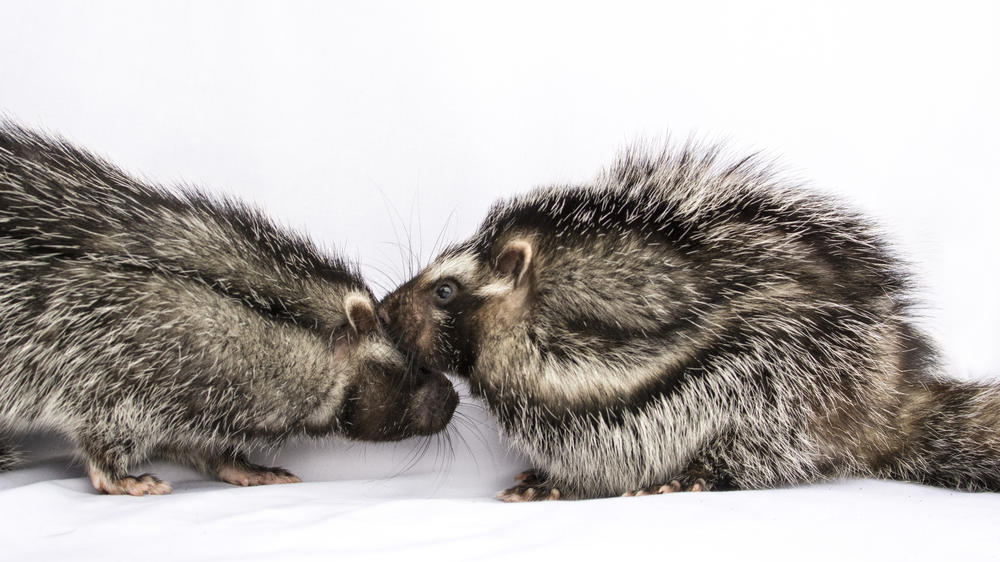Section Branding
Header Content
For Rats That Coat Themselves In Poison, These Rodents Are Surprisingly Cuddly
Primary Content
A poisonous rat that licks deadly toxins onto its own fur sounds like some kind of made-up nightmare species. But these creatures are real, and scientists now say they are also unexpectedly affectionate—at least with their own kind.
To would-be predators, the African crested rat, Lophiomys imhausi, is trouble. They dwell in forested areas on the eastern side of the continent, and people there have long known to steer clear of these elusive black and white rodents.
"If a dog tried to attack them, the dogs would get sick and die. So that information has been sort of circulating around for a very long time," says Sara Weinstein, a researcher with the Smithsonian Institution and the University of Utah who has worked with colleagues in Kenya to trap and study the rats.
The animals don't look at all like a typical city rat. "They're actually about the size of a small skunk," she says. "A lot of that is fluff. They are pretty fuzzy." Like a skunk, these creatures have black and white markings that may serve as a warning. When the animal is threatened, it flares its fur to expose black and white stripes on its flanks.
Intriguingly, those flanks have rows of weird hairs. They're much thicker than normal hairs, says Weinstein, "and they've got this really interesting honeycomb structure."
That structure appears to let the hairs act like a sponge for absorbing poison, which the rat obtains from a plant and deliberately applies to its own body.
That's been known since 2011, when a team of researchers reported that they had captured a crested rat and offered it a branch from the local Acokanthera schimperi tree, which is also known as the "poison arrow tree." It contains a toxin purportedly potent enough to kill an elephant, when applied to an arrow head. The scientists watched as the rat chewed on the bark, mixing it with saliva. Then the animal coated its specialized hairs with the foul mixture.
The discovery thrilled mammologists. "Basically, it's the only known mammal to date, at least that we know of, that co-opts toxins from a plant to make itself venomous," says Adam Ferguson, a mammal expert at the Field Museum in Chicago who says he's obsessed with these rats.
Weinstein and her colleagues wanted to confirm that this unusual behavior seen in a single rat was, in fact, widespread in this species. They also wanted to check to see if this rat's health really was unaffected by this poison.
The research team eventually managed to trap and observe 25 rats. In the Journal of Mammalogy, they say about half of them chewed on the tree branches and applied poison to their hair.
"Every once in a while they did it, but not always," says Weinstein, who says what triggers a rat to anoint itself remains a mystery.
The behavior truly seemed to have no negative effect on the animals, which remained perfectly active and healthy inside their enclosures, she says, noting that "if I was to go out there and start chewing on this tree, I would get incredibly sick and probably die."
The scientists had assumed these rats lived solitary lives, since they're rarely seen and usually seen alone. Then they happened to trap a male and a female rat living in the same area.
When their cages were next to each other, though, "they started making these really interesting purring vocalizations that we'd never heard before," says Weinstein.
It sure looked like two knew each other and wanted to be together.
When the two rats were put in the same enclosure, "they started grooming each other and they went into the nest box together," says Weinstein, "which totally changed how we were thinking about these animals and their behavior."
From that point forward, if they trapped an animal in one location, they'd set up other traps to try to trap more—and they often did. Now researchers believe the creatures may live in bonded pairs, and their young may stay with them for a long time.
"This latest paper is a very nice piece of work," says Jonathan Kingdon, a zoologist at the University of Oxford who led the team that first observed a rat chewing bark and applying poison.
After a childhood spent growing up in East Africa, Kingdon was familiar enough with these creatures to be able to describe them in the 1974 opus he wrote on African mammals. Still, he says, there are many unanswered questions that "scream for attention, most notably the precise chemistry and evolutionary history of crested rat saliva."
Ferguson says this rat has long been almost "mythical, in that it's eluded our understanding, and there's been speculation. But now we're finally trying to get at what really goes on with this rat."
He and some colleagues are working to sequence the entire genome of African crested rats, to try to understand what it is about their biological make up that lets them casually gnaw on such a super-toxic plant.
"This thing is unique," notes Ferguson. "As mammologists and biologists, and humans in general, we're obsessed with rare things."
Copyright 2020 NPR. To see more, visit https://www.npr.org.



